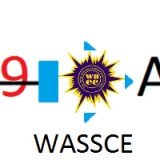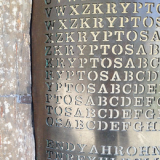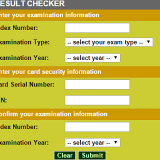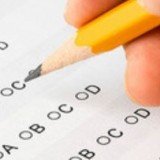It’s important to read all the information on this page, but if you want to download / view the WASSCE / WAEC Chemistry Syllabus straight away, just click the link below:
Note:
Section A
The WASSCE / WAEC elective Chemistry Syllabus is drawn purposely for examinations. Therefore the topics are not necessarily arranged in the order in which they should be taught.
The WASSCE / WAEC Chemistry Sylabus is drawn entirely from the Teaching Syllabuses of the member countries and contains three sections : Section A, Section B and Section C.
This section contains portions of topics which candidates from member countries are required to treat to the same depth.
Sections B
This sections contain portions of topics which are peculiar to the teaching syllabuses of particular member countries.
Section C
Just like Section B, this section contains portions of topics which are peculiar to the teaching syllabuses of particular member countries.
Candidates will be tested from SECTION A and either SECTION B or SECTION C only.
The following assumptions are made in the drawing of the syllabus:
- That candidates must have covered the Integrated Science or General Science and Mathematics syllabuses at the Junior Secondary /High School (J.S.S / J.H.S) level;
- That candidates would have carried out as many of the suggested activities and project work as possible, and consequently would have developed the intended competencies and skills as spelt out in the respective teaching Syllabuses;
- That each school has a well-equipped laboratory.
Candidates are required to be familiar with the use of significant figures, S.I. Units and the IUPAC system of nomenclature.
WASSCE / WAEC Chemistry Syllabus Aims and Objectives
The WASSCE / WAEC Chemistry Syllabus is meant to provide an outline of topics students should cover before they write the Chemistry paper on the WASSCE. However, as we mentioned on this page, it doesn’t necessarily mean that questions on the WASSCE Chemistry paper would come from every topic indicated on the WASSCE / WAEC Chemistry Syllabus.
The WASSCE / WAEC Chemistry Syllabus is aimed at students who:
- Will end their study of Chemistry at the Senior Secondary School level;
- Require application of Chemistry in their vocational studies;
- Wish to continue the study of Chemistry at tertiary institutions;
- Build upon the knowledge acquired in Integrated Science or General Science at the J.S.S level;
- Provide students with basic knowledge in chemical concepts and principles through efficient selection of content.
The WASSCE / WAEC Chemistry Syllabus objectives are as follows:
- To enable students to appreciate the scientific method which involves experimentation, accurate observation, recording, deduction and interpretation of scientific data;
- To enable students to develop laboratory skills, including an awareness of hazards in the laboratory and the safety measures required to prevent them;
- To create an awareness of the inter-relationship between chemistry and other disciplines;
- To show chemistry and its link with the industry, the environment and everyday life, in terms of benefits and hazards
Scheme Of External Examination
The external examination is usually written in November / December.
The external examination for Biology contains 3 papers– Paper 1, Paper 2 and Paper 3. Candidates will be required to take either Papers 1 and 2 or Papers 2 and 3 only.
Paper 1
This paper shall be a two-hour practical test and shall be taken by school candidates only. The paper shall contain three questions carrying 50 marks and shall form 25% of the total marks for the external examination.
Candidates will be required to answer all the three questions.
The questions shall be distributed as follows:
One question on quantitative analysis;
One question on qualitative analysis and the third question shall test candidates’ familiarity with the practical activities suggested in their teaching syllabuses.
Paper 2
Shall be a three-hour theory paper covering the entire syllabus and carrying a total of 150 marks i.e. 75% of the total marks of the external examination. The paper shall have two parts – Part A and Part B.
Part A
Shall contain fifty objective tests drawn from Section A of the syllabus. Candidates will be required to answer all the questions within 60 minutes for 50 marks.
Part B
Shall contain three sections: Sections I, II and III.
Section I
Shall contain four essay questions drawn from section A (common section) of the syllabus.
Candidates will be required to answer any three of the questions. Each question shall carry 25 marks.
Sections II
This section shall contain two questions each drawn from SECTIONS B and C of the syllabus respectively.
Section III
Just like Section II, this section shall contain two questions each drawn from SECTIONS B and C of the syllabus respectively.
Candidates will be required to answer one question from one section only. Each question in the sections shall carry 25 marks.
Paper 3
Shall be a test of knowledge of practical work and shall be an alternative to Paper 1 (i.e. the actual practical paper).
The paper shall be taken by private candidates only. It shall contain three questions as specified for Paper 1.
Candidates will be required to answer all the three questions within 2 hours for 50 marks.
Continuous Assessment
The continuous assessment component shall form 30% of the total marks for the assessment of candidates.
Details of the input into the continuous assessment shall be given by the Council.
















Thank you very much for effort made.May God richly bless you guys for good job done.
Thank you! Best wishes.
Thank you very much for the efforts msde.
Thanks for the feedback. Best wishes.
Best wishes, Thank you
Thanks!
Good job done thanks you all for your tireless efforts.
Many thanks for your comments. Wishing you all the best!